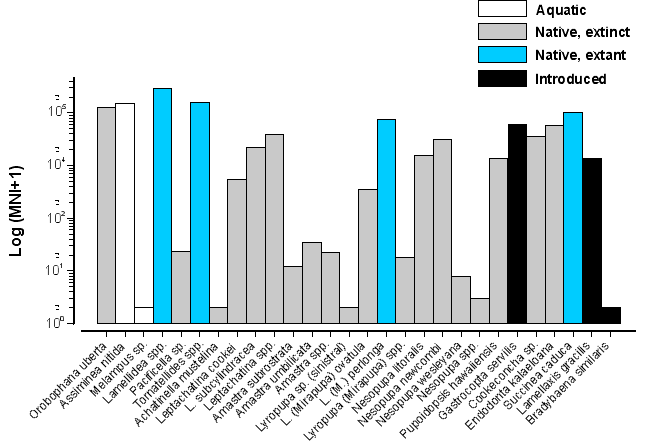
Figure 2: Distribution of land snail taxa at 18 Kalaeloa sites. Note logarithmic y-axis scale
Analyse the data using XLisp-Stat
The Kalaeloa sub-fossil land snail collection is one of the richest and largest faunal collections recovered archaeologically in Hawai`i. The large number of identified individuals means that it is likely that most, if not all, land snail taxa that inhabited Kalaeloa over the time covered by excavated deposits have been identified.

Figure 2: Distribution of land snail taxa at 18 Kalaeloa sites. Note logarithmic y-axis scale
Analyse the data using XLisp-Stat
The distribution of identified individuals among 28 identified taxa is uneven (Fig. 2). Five very abundant taxa each contribute more than 10,000 individuals and together make up 69% of the collection. Ten abundant taxa, each with over 1,000 individuals, together make up 30% of the collection. Two common taxa, each with more than 100 individuals, make up less than 1% of the collection. The remaining eleven rare taxa, each with between 1 and 33 identified individuals, round out the final 0.1% of the collection. Not surprisingly, three of five native, extant taxa are very abundant and a fourth is abundant (Table 2). The fifth native, extant taxon, Lyropupa (Mirapupa) spp., is not classified by Christensen (1995), but is considered extant here because individuals assigned to this generic taxon might include unidentifiable specimens of the extant L. (M.) perlonga, which is identified in greater numbers than the native, extinct taxon L. (M.) ovatula. In contrast, only one native, extinct taxon, Orobophana uberta, is very abundant, seven are abundant, and the remaining ten taxa are either rare or common.
| Ecological group | Very abundant | Abundant | Common | Rare |
|---|---|---|---|---|
| Introduced | 0 | 2 | 0 | 1 |
| Native, extant | 3 | 1 | 0 | 1 |
| Native, extinct | 1 | 7 | 2 | 8 |
| Aquatic | 1 | 0 | 0 | 1 |
© Internet Archaeology
URL: http://intarch.ac.uk/journal/issue10/dye/kalaeloase3.html
Last updated: Tue May 29 2001